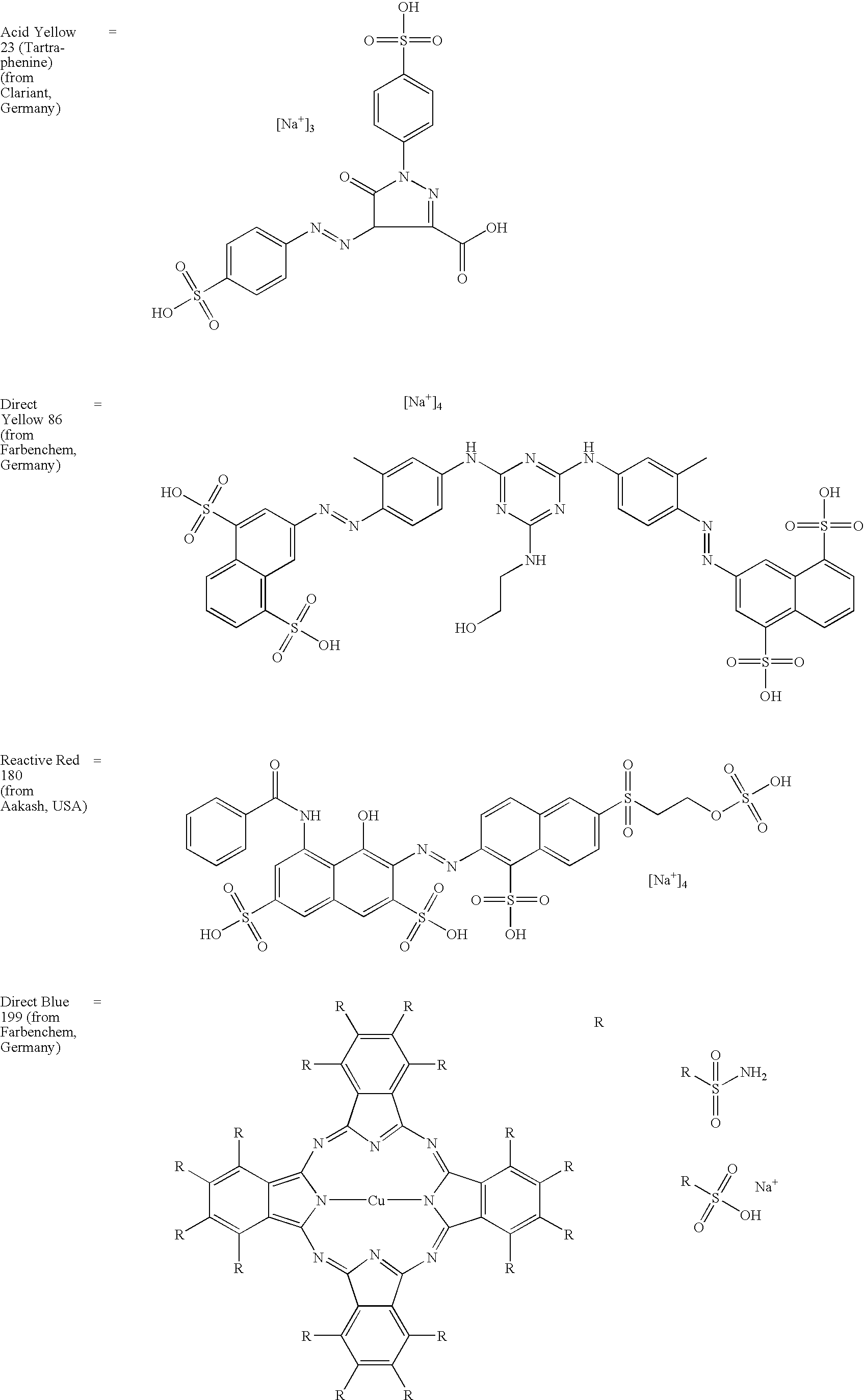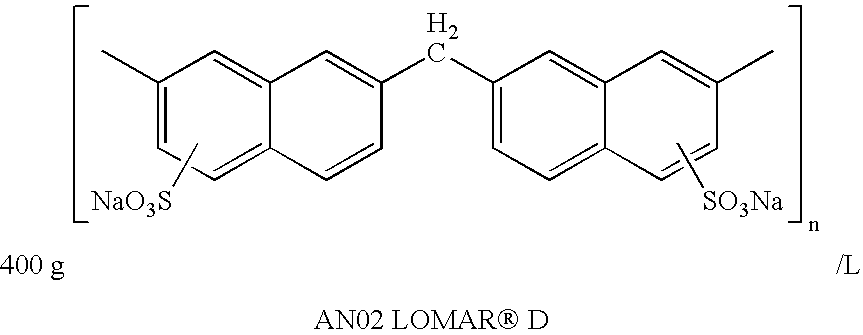Process for contact printing of patterns of electroless deposition catalyst
a technology of electroless deposition and contact printing, which is applied in the direction of conductive pattern formation, liquid/solution decomposition chemical coating, coating, etc., can solve the problems of oleophilic ink incorporation problems, driographic printing processes still have the disadvantage of voc emission from oleophilic ink, and none of these patents disclose the addition of functional materials, other than dyes and/or pigments, to the hydrophilic. , the effect of high
- Summary
- Abstract
- Description
- Claims
- Application Information
AI Technical Summary
Benefits of technology
Problems solved by technology
Method used
Image
Examples
example 1
Offset Printing of Development Nuclei via the Fountain as Hydrophilic Phase
[0162] The preparation of palladium sulphide physical development nuclei is described in the example of EP-A 0 769 723, herein incorporated by reference. From this example, solutions A1, B1 and C1 were used to prepare a nuclei dispersion with a concentration of 0.0038 mol / l. 10 grams of isopropanol was added to 90 grams of this dispersion. This was “fountain medium A”.
[0163] 10 grams of isopropanol was added to 90 grams of a dispersion of silver physical development nuclei with a concentration of 0.027 mol / l Ag and an average particle size of 5-6 nm. This was “fountain medium B”.
[0164] Printing experiments were carried out with a 360 offset printer from A.B. Dick with MT253 Yellow, a yellow offset ink from Sun Chemical, using a Thermostar™ P970 / 15 printing plate, receiving media 1 to 3 as described above and “fountain medium A” and “fountain medium B”. With both fountain media 150 prints were made without ...
example 2
Increasing Conductivity via a Diffusion Transfer Reversal Process
[0169] Development nuclei were printed via the “fountain medium A” on receiving medium 2 and then developed via the diffusion transfer reversal process described in example 1. The resistance was 1500 Ω / square. The receiving medium was then developed for a second time via the diffusion transfer reversal process, using the same conditions as described before, resulting in a resistance of 100 Ω / square. Since the transfer emulsion layer did not have to be photoexposed, problems of misalignment of the transfer emulsion layer to the already patterned receiving medium did not occur.
[0170] A single DTR process step in which the contact time was increased from 1 to 3 minutes, did not give a reduction in surface resistance compared with the two subsequent DTR processes.
example 3
Increasing Conductivity via the Fountain as Hydrophilic Phase
[0171] Solutions A1, B1 and C1 were prepared as given below:
1% solution of polyvinyl(NH4)2PdCl4Na2Salcohol indeionized[g][g]deionized water [mL]water [mL]A12.1725475B1225475C13.240760
The physical development nuclei were prepared, as described in the EXAMPLE in EP-A 0 769 723, by a double jet precipitation in which solution A1 of (NH4)2PdCl4 and solution B1 of sodium sulphide were added at a constant rate during 4 minutes to solution C1 containing sodium sulphide while stirring at 400 rpm. Subsequent to precipitation, the precipitated nuclei obtained were dialysed to a conductivity of 0.5 mS. A 250 g sample of this dispersion was concentrated by evaporation to 50 g and 5 g isopropanol was added. This was “fountain medium C”.
[0172] Printing was performed as described in Example 1 on receiving medium 5, with both “fountain medium A” and “fountain medium C”.
[0173] After DTR development was performed as described in Examp...
PUM
| Property | Measurement | Unit |
|---|---|---|
| viscosity | aaaaa | aaaaa |
| printing speeds | aaaaa | aaaaa |
| printing speeds | aaaaa | aaaaa |
Abstract
Description
Claims
Application Information
 Login to View More
Login to View More - R&D
- Intellectual Property
- Life Sciences
- Materials
- Tech Scout
- Unparalleled Data Quality
- Higher Quality Content
- 60% Fewer Hallucinations
Browse by: Latest US Patents, China's latest patents, Technical Efficacy Thesaurus, Application Domain, Technology Topic, Popular Technical Reports.
© 2025 PatSnap. All rights reserved.Legal|Privacy policy|Modern Slavery Act Transparency Statement|Sitemap|About US| Contact US: help@patsnap.com


